There is a stone in stone bridges - called a keystone - which if we removed, causes the whole bridge to collapse.
Keystone species are species which when removed from ecosystems cause things to fall apart. Sea otters are a keystone species. When they leave an area, kelp forests get decimated. That’s because the sea otters are no longer keeping in check the population of sea urchins, which will multiply to eat the whole kelp forest. Restoration of the kelp forest can transpire by bringing back sea otters.
Beavers are a keystone species that have played an outsize role in the development of the landscapes and ecosystems of North America and Europe. The removal of them from our continents led to the Great Drying ( a term coined by the geomorphologist and beaver researcher Ellen Wohl) that extended from 1600 to 1900.
When I connected with Leila Philip, author of Beaverland - How one weird rodent made America, she bubbled with enthusiasm talking about the importance of beavers to our ecosystems.
She writes in her book “When the glaciers of the last ice age melted.. the modern ancestors of today’s beavers wet at it, felling trees and building dams throughout Asia, Europe, and the Americas. In North America, beaver dams, ponds, and waterworks established hydraulic systems that created much of the rich biodiversity of the continent. That was the primordial Beaverland - North America before European colonizatio, when as many as four hundred million beavers filled the continent….. The great boreal forests that sprang up, threaded with beaver made waterways, would have looked something like what I see now- half water-world- streams spreading out through the forest as great fans of water, overspilling banks, then receding in rhythm with the seasons. Unlike the streams and rivers we know today, mostly degraded so that their currents carve channels through the earth, picking up speed and causing more erosion as they cut deeper into the groun, these messy, slower-moving streams and rivers from the time of Beaverland contracted and expanded like tides, they were arteries and veins of water pulsing life into the land”
Paddling in the waters, gnawing trees, placing sticks in the river, this furry creature was unaware that it was altering the living systems on our continents. The beaver did not set out to rewrite our ecosystem, they were just working to create a home for themselves. But local interactions can have large consequences. One of the fundamental insights that have come out of complexity science in recent years is that as you shift of a few rules, make a few tweaks, the whole system can behave in radically different ways. The beaver is that tweak that changes our ecosystems.
Leila Philips writes “Scientists call beavers ‘ecosystem engineers’ meaning they create new habitats, new ecosystems when they build their ponds. The dead trees that now ring the marshy edge of the swamp bring nuthatches, woodpeckers, and other species of birds that feed on the insects in the rotten wood. Great blue herons stalk the shadows and red-winged blackbirds heraid in the trees. In the highest points osprey nest. Meanwhile, the life forms in the water itself increase exponentially. Wetlands are a soup of life, each teaspoonful containing millions of organisms. Water from beaver-altered streams and wetlands has been measured to contain fifteen times more plankton and other microbial life than wetlands without beavers. Zooplankton in particular love the nutrients provided by the beaver poop.”
The importance of bringing back keystone species has been increasingly utilized by the ecorestoration and rewilding movements. In our time of multiple water crises, we would do well to integrate beavers into our water strategy for North America and Europe. Leila Philip writes “we could use beavers to help again to help our water problems.. if we were smart enough - if we were humble and open enough.” The beavers help rehydrate the land, and they help mitigate floods. In the Chesapeake Bay beavers build, for free, stormwater management ponds that that would otherwise cost one to two million dollars, ponds that help extract the pollutants out of the water. Beavers also help stop wildfire. The researchers Emily Fairfax and Andrew Whittle have shown the land is much less affected by wildfires where beavers make dams compared to beaverless areas. [Fairfax 2020].
Here is some of the conversation between Leila Philip and I, edited for clarity and brevity. (If you want to know about the inner life of beavers, that’s in audio form only - go to 57:36 min mark in the podcast)
BEAVERLAND
Leila Philip: Writing Beaverland was like many book projects, a kind of fever dream that just wasn't over till it was over. I would spend six years on Beaverland because I just became so fascinated by beavers and all I was learning, and I had so much fun writing it.
I teach writing at the College of the Holy Cross in Worcester. I give this writing exercise to my students and say, what keeps you up at night? What are the stories you urgently feel you need to tell? It's a way of kind of helping them connect with what's important to them. I always do the assignments with my students and I kept finding that I was saying the environment, back in 2012. I was desperately worried about climate change. So I thought, well, I have to really kind of think about this and I really shifted all my teaching into environmental studies and helped my college found a program in it. I started writing a column for the Boston Globe. My beat was environment politics and culture.
I met my beavers by accident. I met these beavers and that was it. I was taking a walk with the woods with my dog, as I did twice a day, as a break from writing at my desk, and I was walking in the woods, and I heard this bam, and I didn't know what it was. I literally thought maybe a gun had gone off, and I looked to where my dog was looking and there was this small brown head swimming through the water. It was crazy because just a few days before that had been a brown swampy area with no water. Suddenly it was full of water. There was this small head swimming back and forth and bam, the beaver slammed her tail again.
I was just hooked. I mean, the tenacity of this animal. She was telling me to get lost. And I would go down every day and watch this growing pond and this beaver. I swear she was watching me just as much as I was watching her and it just became the anchor of my days. It was incredible the transformation of this wetland.
You know, now that I understand the science, it really still makes my hair stand on end to think about what was happening. I live in Woodstock, Connecticut - a pretty much environmentally devastated part of the country early on. But now here's this beaver that is basically restoring the wetland here. Pretty soon wildlife was coming back. By the end, the gorgeous pond spread almost a half mile long.
Here in the northeast in our woodland areas, if there are some woods around, beavers can build a dam in two or three days, and start the process of ponding. Two beavers had within a week, felled a tree and built up a pretty good size dam in a pinch point where the stream went through a narrow area. They had built it along a existing stone wall. I now understand that the swampy area I thought was just a kind of nothing burger is actually a historic beaver meadow.
History
There actually would have been beavers there going back hundreds of years, if not thousands throughout the Holocene, because that small stream is part of a river network. Beavers will move into a stream network, build a dam, swell it into a pond, and then build more dams. After a certain period of time they'll move on and then the dam will break down, the pond will release its water, and around it will grow up shrubs. Eventually it grows back into a forest. It turns out that this is incredibly important for the forest ecology, plant ecology, as well as the ecology of the river system.
The subtitle of my book is How one weird road made America. It's not an exaggeration to say they made America. They jump-started our first economies. They jump-started transatlantic trade. Beaver pelt had a markup of something like 900% if you could get it to London. You can imagine how quickly people were greedy for this. By 1900 the beaver were pretty much wiped out throughout North America.
But what was even more incredible to me to learn was the way beavers literally shaped the river systems, the geography and the watersheds of North America. That just blew my mind that we actually trapped them out. Geologists call 1600 to 1900 the Great Drying.
It was the first environmental devastation on North America that was perpetuated by Euro Americans by colonization. That was the first big hit to the river system that would really impact the water web and the water cycle here. Then would come timbering and other industries and infrastructure, but the first big hit was the fur trade.
Restoration
It's also really exciting that they are now also one of our greatest conservation comeback stories. We now have beavers back, and they're being harnessed throughout the country as part of nature based restoration programs. That, to me, is such an exciting, wonderful story that needs to be told.
[Diagram from Colorado Riparian Association]
Everywhere there's a beaver out in the watershed doing its beaver work, the river is being restored. We'd be a lot better off the more we can support beavers, create habitat for them, coexist with them.
We've had really bad flooding in the East last summer. What was interesting was areas of my dirt road were completely flooded where there were not beavers, but the places where there were beavers, beavers that the town wanted to trap but they hadn't gotten to it yet, those places held the water. That's because those wetlands were sponges; they were managing the water.
What's maybe even more significant in terms of ecology and river health is underneath that visible basin is a sponge of water that's holding at least three times as much water as the basin of water you can see. The math of how much water is being held in the river system by beaver ponds gets big really fast. Beavers never build one dam and one pond. They'll build a series - almost like a series of terraced rice fields along a creek or a stream. Imagine a string and then beads along it. Each of those beads is a visible basin of water that’s ready to rehydrate the stream system if you get a drought. It's ready to soak up water if you've got a scalding rain event. It's drought protection. It's wildfire protection. It's flood mitigation.
These sponges also serve as big, coffee filters. As the water is slowed down in this sponge, it can sink down into the aquifer. And as it sinks down, it's cleanses pollutants like nitrogen and phosphorus, things that we really need to get out of the water system. It also cleanses sediment. Out in places like California, they're restocking beavers up into the watershed, because when wildfires go through these beaver wetlands, the wetlands do an incredible job cleansing the water of ash.
There's a really robust rewilding program of beavers going on in Europe and in the UK. It's really fun to watch. The EU had said that the restoration of riparian borders around rivers was an important priority because they're having so much problem with flooding. Pretty quickly people realized having beavers in the equation was going to be important.
In North America, the estimate is that from 60 to 400 million beavers once filled the continent. Voyages National Park, in Minnesota’s Boundary Waters, has got the highest density of beavers left in the United States. The beavers have been allowed to rebound without human pressure and now the entire park is covered with beaver lodges. In Canada, beavers are in a lot of the big lakes there.
Rivers and biology
Α paradigm shift, as I understand it, is happening in river science. Up until now, river scientists have focused on the physics of how water moves through a river, they hadn't thought as much about the biology of the river. Beavers are a part of that biology. They're a big part of what slows the water down.
I was just out in Oregon last week looking at a site on the Mackenzie River, where the Forest Service has literally put 4,000 logs into a valley area to try to give the valley back to the river. Once that water is slowed down enough, beavers can move in and further help with that slowing process. When the rivers are moving so fast the beavers can't thrive there yet.
We saw one beaver lodge where they had started the restoration. The upticks in a matter of months of endangered Chinook salmon are just incredible in a matter of months. The restoration efforts that come with a change in thinking are very exciting.
Alpha: I think that's a really big deal because when we first learn about rivers, we are just taught that it's the rain coming down and it's carving out the soil and the landscape, then the river bends and it goes to the sea. But really, the beavers, hundreds of millions of them, they're in all the river systems, they're changing the river shape, the ponds and the wetlands, the flows in the flood plain. It's not a small thing. This is an integral part of the whole North American landscape that the beavers have changed. We can't just think of it as just water moving through the landscape. We have to couple the beaver with the river. That equation is how we understand the whole water system.
Leila Philip: Yeah, in Beaverland, I really set out to show how beavers are central to the health of the river network, and that we need to think about it as a vast circulatory system that pulses water through the continent. Beavers create this rhythm of ponds and wetlands and beaver meadows. And it's not just these structures that we see.
There’s a lot of that's happening under the ground where we can't see it. Water goes underground and then comes back up. These wetlands and ponds allows the water also to seep down underground and go into the aquifers. This allows the streams to keep running. Tree roots will bring up that water. The waters may be hidden, but because it can be brought up, it can help retard fires.
In the hyporheic zone, is this kind of shadow river that runs underneath the river system underneath every creek or stream, where there are all kinds of microorganisms and geochemical processes. There's another slower flow that's going through the soil. It can be it can extend as as deep as 30 feet underneath the river depending on the structure of the soil is. I'm interested in the different organisms that depend on that. I think we are at a new frontier of understanding here. In the same way how we recently increased our understanding of mycorrhizae fungal networks, I think we're going to understand that there is a lot more going on in terms of the microorganisms and the connectivity of soil and water. We can reconnect these rivers, we can give the land back to the river.
A light bulb moment for me was tromping around with Dr. Berkstead, that wonderful geomorphologist in the White Mountains. I kept saying “Where's the river?” and she said “Look down, it's under your feet.” I would see water moving through the grass, like a flowing meadow. She said “That's the river system.”
Indigenous stories and nature based restoration
In many ways we would be well to go back to some of the teachings in North America, that have been on this continent a long time. The Great Beaver story is an example of that, which is why I wanted to open the book with that. I weave through a lot of indigenous ecological knowledge - the Great Beaver story is about the dangers of hoarding resources, basically. There are a lot of Algonquian stories about the dangers of hoarding resources. The Algonquian peoples lived up and down the Atlantic Seaboard. There are Great Beaver stories throughout North America. They are different Great Beaver stories in the arid high plains where the Black Feet were. They all revered the beaver as a teacher and a protector.
If you take beavers out of the ecology, everything starts to fall apart. It’s not just what the beaver can do for us, but what we need to do for the beaver.
Alpha : Nature-based restoration is a movement now. What role do beavers play in the movement?
Leila Philip: I think state by state it varies. Out west, California is using them for watershed resiliency. California has a statewide beaver working group. And interestingly, they trans-located or restocked beavers back into the watershed for the first time in 75 years. California is a great example of a state which mismanaged beavers for many years, but then did a dramatic U-turn in 2023. From the top down - Governor Newsom. There were many people who have been working very hard throughout the state. Indigenous tribes and communities had been trying to get beavers back for a while, but until the state said, okay, this is our priority, there were a lot of impediments.
Alpha : I interviewed Brock Dolman on this show and he played a role in that.
Leila Philips : Yes. And Kate Lundquist [a colleague of Brock Dolman]. And the Maidu Summit Consortium and the Tulay tribes. Seven beavers went back into Maidu Historic, Maidu Mountain Lands, and they're doing well. And this summer beavers are going into the Tulay tribe lands and their other sites. They've done the prep work for them. Beavers are going back - as part of wildfire mitigation, watershed resiliency, water cleansing, and slowing the water down. There is money for coexistence strategies. There's $2 million in the state budget. If you or I had beavers flooding our town roads, we could go to the state and say, help us with some funding, so we can keep the beavers for biodiversity and all the benefits. We're going to put pond levelers in or flow devices to lessen the flooding, so that we can keep the beavers here and we don't have to trap them out, which had been the default.
Oregon has a similar $1.5 million for coexistence strategies. They're changing the legislation, they removed them from the predator list. Washington has a similar kind of bill in the legislation now called the dams act, supported by 80 organizations and tribes. Money for non-lethal responses to beavers. Here in the East, state by state, there's a lot of coexistence work going on. The Beaver Institute in Northampton, Massachusetts has national working groups. They have a goal of a beaver help hotline so that from anywhere in the country, if you have a beaver problem, you can call this hotline and say help, beavers are flooding my road. Interestingly, quite a number of fur trappers are engaged in this. They're using their knowledge base to help in non-lethal ways.
Dams, evolution, biodiversity
Alpha: Why do beavers build dams?
Leila Philip: I think nobody really knows why they started, which is kind of a fun evolutionary, biology question. They live off aquatic vegetation. It's a myth that they need to keep cutting down trees to eat. They do survive at times of the year on the underlying bark, the cambium, but they don't get much protein from that. They basically like to eat shrubby things along the shore, aspen, willows and aquatic vegetation. They eat a lot of aquatic vegetation. It varies region to region where they live out west. They'll eat a lot of cottonwood here. They'll eat wild blueberry, water lily tubers, cat tails and then all kinds of duckweed.
They're pretty awkward on land, so they need water to survive to get away from predators. They are very vulnerable to being a coyote snack or a wolf snack on land. I have three wildlife cameras up on the beavers I'm watching here and I've been pretty shocked to see who is stalking them at night. Bears and bobcat. A lot of animals would like to eat beaver. So the beavers slowed down the water, and created these ponds and beaver lodges to avoid predators. This is the reason they proliferated to hundreds of millions in the North American continent.
Wherever there are beaver wetlands, there's a huge explosion of salmon. They're being used for salmon restoration programs out in the Northwest, led by indigenous tribes. In the Mackenzie River they saw an uptick right away in endangered Chinook egg spawning, and saw a big appearance for the first time in years of bullhead trout. Beavers are used, not just for hydrology, but for biodiversity and to bring back different kinds of species that are on different lists, amphibians, fish, and different birds here. Beavers are a keystone species.
Beavers are also important for the plant ecology because there are certain types of trees that need disruption in order to germinate, and the forest needs disruption to have more variety and heterogeneity. Beavers will come in and create a pond which kills an area of the forest. But then when it grows back, different types of trees grow. You don’t get monoculture.
Title and subtitle
Alpha: How did you come about the title of your book - Beaverland?
Leila Philip: The title came from Herb Sabansky, that fur trapper that I went out with in the swamps here. I was practically up to my waist in water, while he was standing on a beaver lodge and he just looked around and said, with so much joy in his voice - “This is Beaverland.” I was, I don't know what he's talking about, but that's kind of cool. I wrote it down. Then later I thought, North America was Beaverland. In many ways, it still could be Beaverland. That's got to be the title of the book.
There's a funny kind of story about the subtitle, How one weird road made America , because I was pretty committed to that subtitle.
Alpha: It's a catchy subtitle.
Leila Philip: Well, some people are like, what are you talking about? You can't call Beavers weird. That's so disrespectful. And I said, you know, we could use a little humor around here. And once you read the book, you'll get it. I wanted this to be a story that could have some humor that didn't avoid the darkness, because, you know, we really devastated the environment here. The indigenous peoples here really suffered in colonization. But at the same time, you know, beavers show us a way forward that really can be out.
The Black Feet understood grass ecology, they understood the hydrology. They relied upon the bison which relied upon the grass and they understood that beavers were critical to the river system, which the grass needed, which the bison needed. So it would be foolish to hunt beavers. These stories of the Great Beaver have a lot of profound understanding of ecology and science. These are some of the oldest stories of the continent.
Alpha : I don't think we give an important enough role to the beaver since they influenced so much of the geography and vegetation of the continent.
Leila Philip: It raises an interesting question about why, because here in the United States, we like symbols like the bison and the eagle, because I think they fit this American vision of big and strong and empire building. But beavers don't really fit that. Once I had learned everything I'd learned about beavers, I thought, you know, they are much more important than eagles. And just as important as bison. But nobody really wants to own them. So that's partly why the subtitle of the book is How one weird rodent made America because I was just going to say, no, you have to face the fact that it was all about beavers. And they're 36 inches tall, they have four ever growing orange teeth and a big tail, and they're a rodent. That's your history. And it's a good history. Plus they’re cooperative.
There's this hilarious story about beavers, if I may, where in winter, there was this outfit where they had a camera in a beaver lodge. Some muskrat showed up and beavers don't particularly like muskrats. They live in the same pond without strife, but they are not particularly fond of them. The muskrat wanted to move into the beaver lodge and the beavers were kind of trying to get it to go away. But muskrat was like, here I am, it's cold out there. It had its straw with it and everything. And so the beavers built a wall and the muskrat just stayed there all winter. I just thought that's really classic beaver. You know, just find a way, and work it out. That doesn't fit a lot of our American psychology.
……………………………………………………………………………………………………………………………….
Beavers and the small water cycle
Those of you who have been following this newsletter for a while know that the small water cycle, aka precipitation-cycling, the water cycle from land to air to land, has been one of the central themes that’s threaded through a lot of these essays. As I was writing this essay, I started thinking about the extra trillions of gallons of freshwater the beavers once helped create on our continents. Some of that water evapotanspired to create more rain downwind on the continent. When we removed beavers from our ecosystem this led to a reduction of the small water cycle.
The Great Drying also caused the land to heat up, which in turn affected the circulation of the atmosphere. How the circulation gets affected is complex, because wind is complex. I’m still figuring out this part out. The heating up of the land causes air to rise, which creates a low pressure system, that then draws in winds. I think different climate models will simulate somewhat different wind patterns that result from land cover changes. And I think different atmospheric scientists have different opinions on this. Those wind patterns then affect moisture flow and rain patterns. In certain geographies and climates the heating of the land will cause winds to be drawn in from the ocean, and thus it will lead to more ocean based rain e.g. the heating of the Tibetan plateau causes the drawing in of ocean monsoons earlier [Duan 2020]. So the drying of our continents could mean more extreme hydrological events - with less small, regular rain coming from the small water cycle, and more big rains coming from the ocean. Counteracting this, bringing back beavers might thus increase small and medium rain in North America, while decreasing larger rains [This is a phenomena it would be interesting run a climate simulation on, if some scientist wants to try.]
……
I really enjoyed this sojourn into the world of the beaver with Leila Philip. Her website is Leilaphilip.com . Here’s to the beaver!
Here are two of my previous articles about slow water , “Slowing our waters - an interview with Erica Gies”, “Beavers, biology, and slow water: Brock Dolman”, and “Slow water”. Beavers can play a key role in the slow water movement that Erica Gies and Brock Dolman suggest.
If you would like to support this newsletter, you can share this newsletter, and/or become a paid subscriber.
References
Duan, A., Hu, D., Hu, W., & Zhang, P. (2020). Precursor effect of the Tibetan Plateau heating anomaly on the seasonal march of the East Asian summer monsoon precipitation. Journal of Geophysical Research: Atmospheres, 125, e2020JD032948. https://doi.org/10.1029/2020JD032948
Fairfax, Emily, and Andrew Whittle. "Smokey the Beaver: beaver‐dammed riparian corridors stay green during wildfire throughout the western United States." Ecological Applications 30, no. 8 (2020): e02225




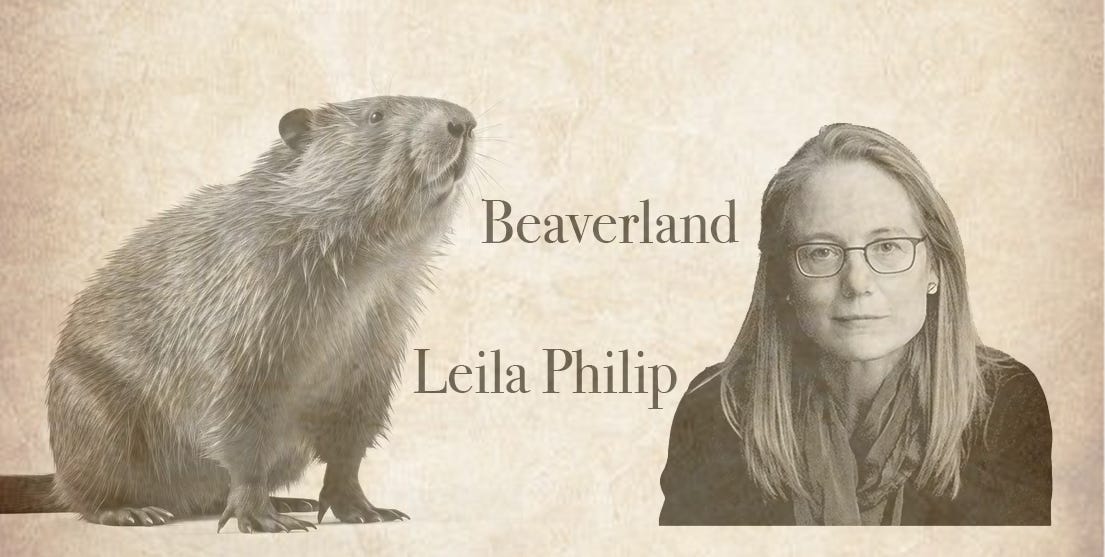
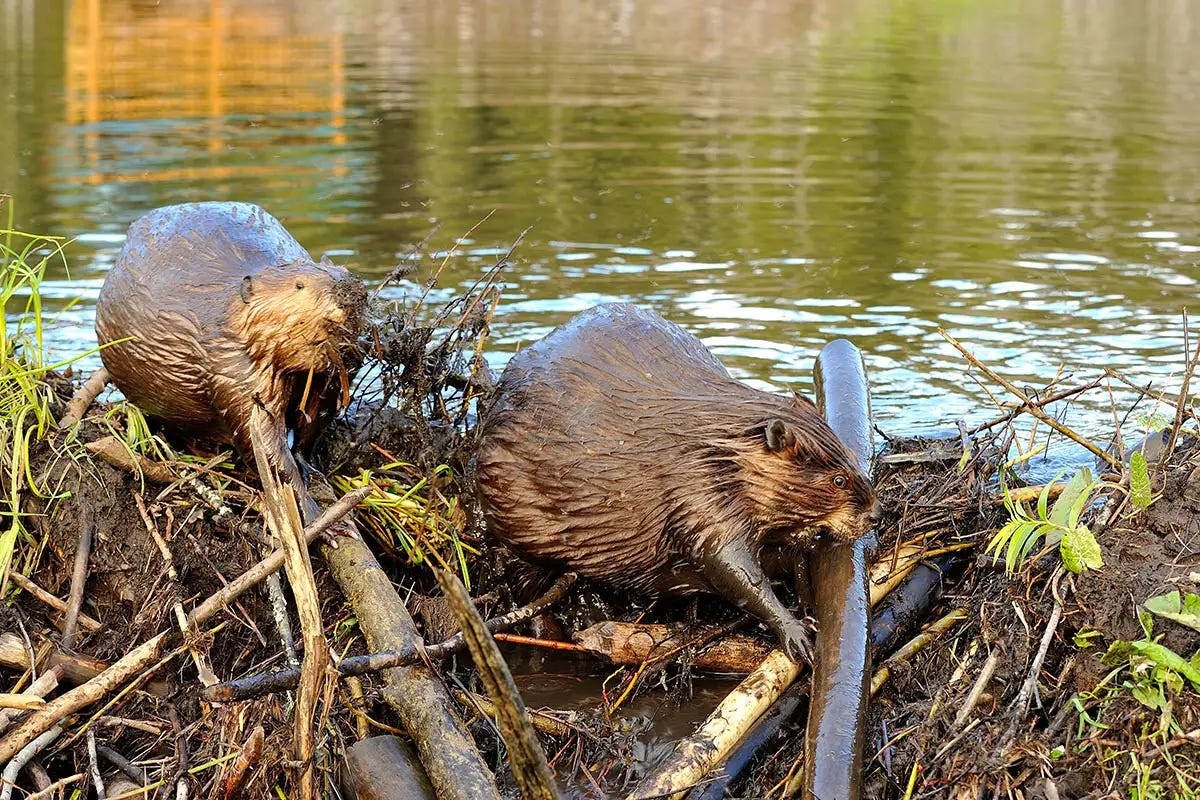
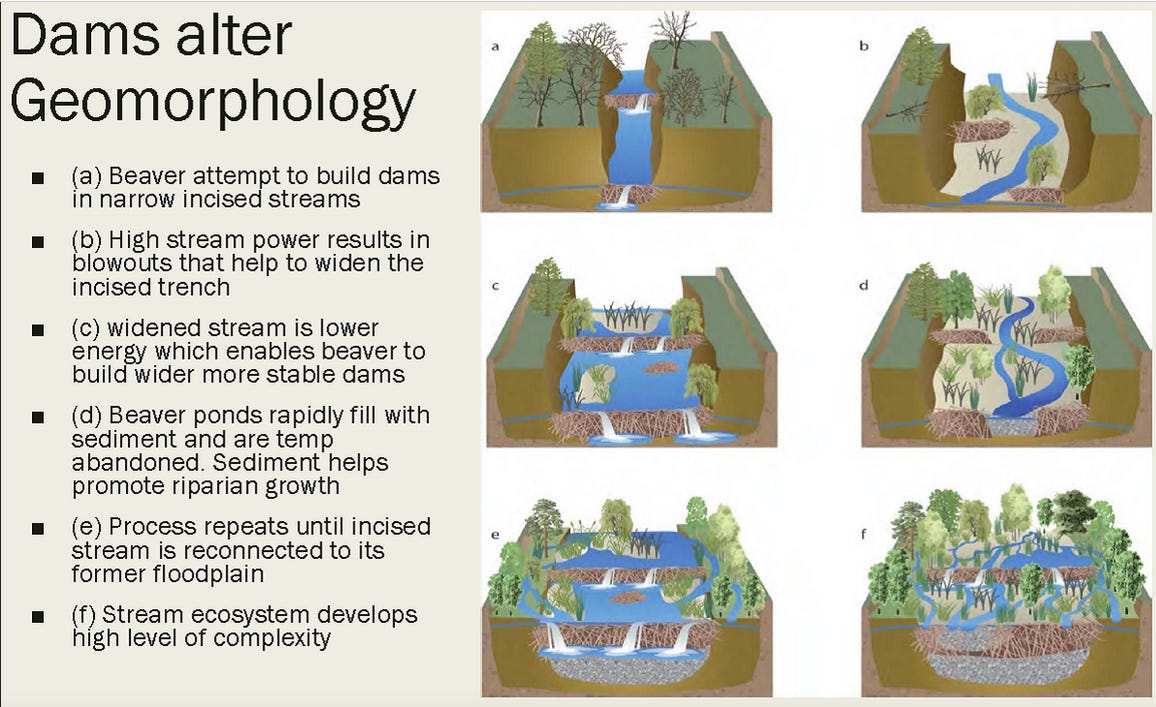


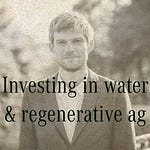
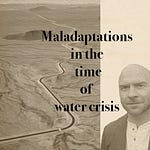


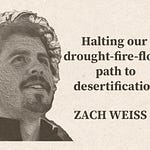


Beaverland: interview with author Leila Philip